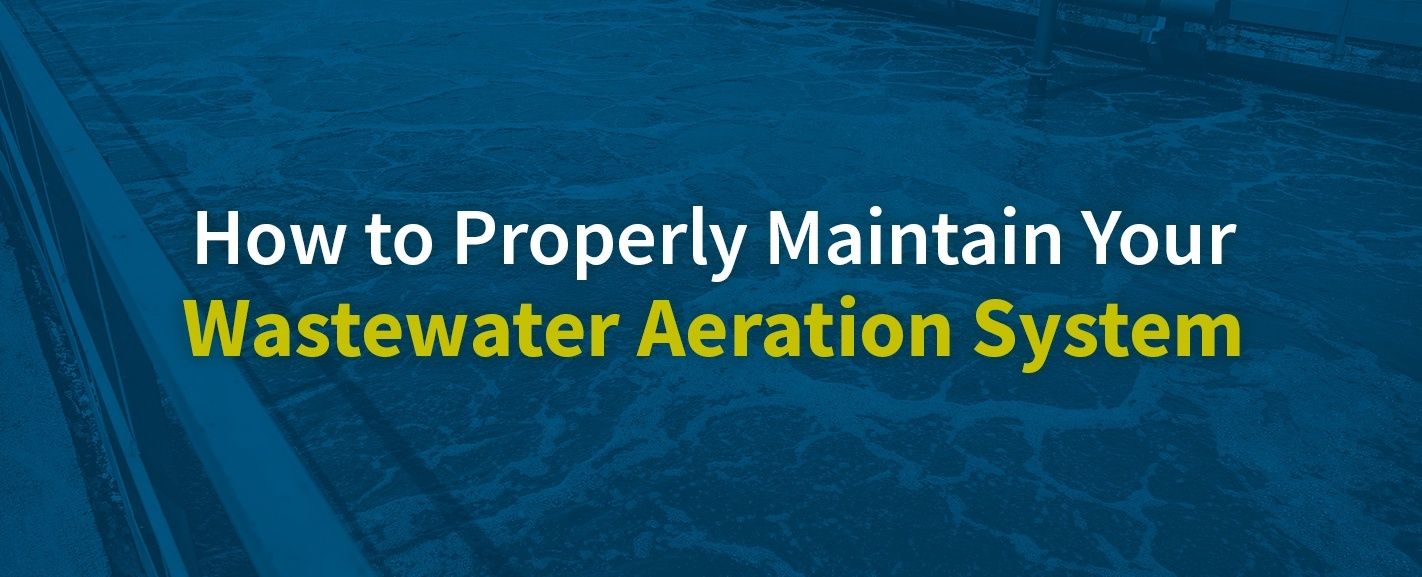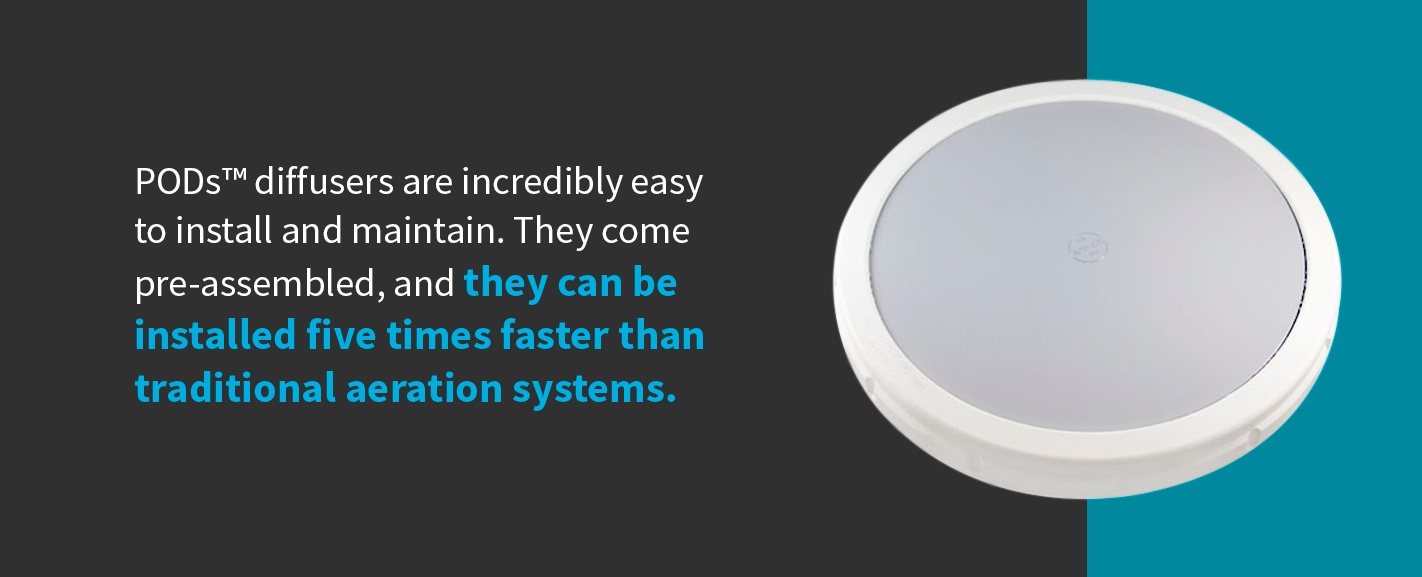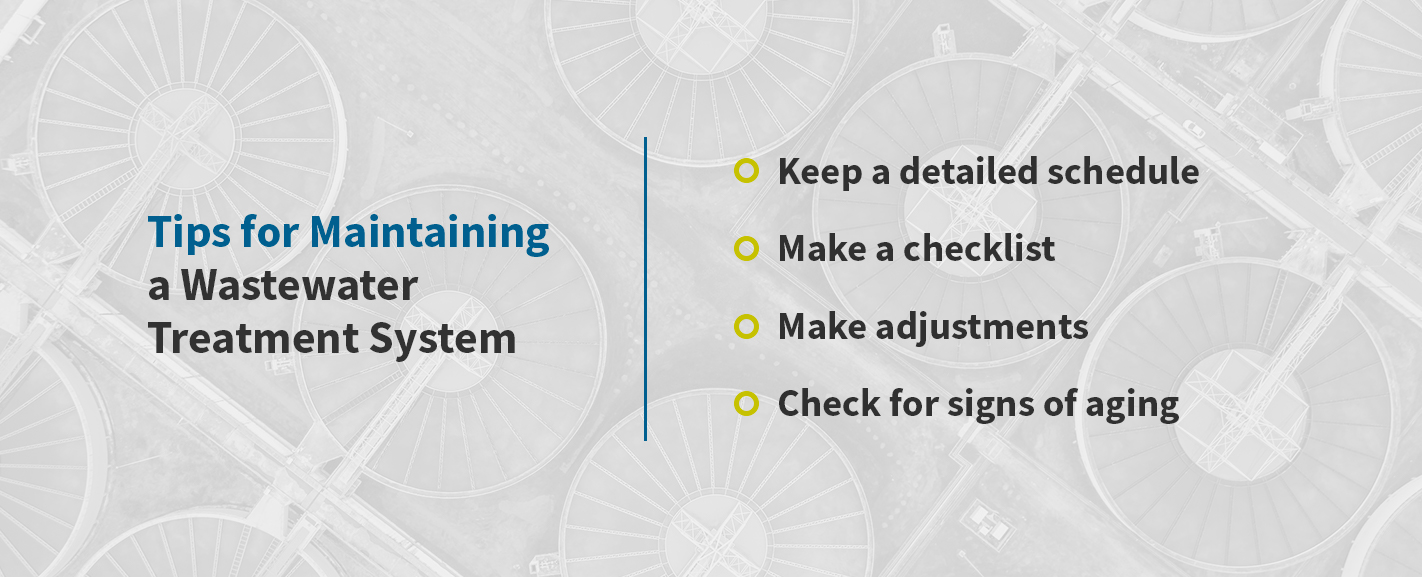How to Properly Maintain Your Wastewater Aeration System
By: Tom Frankel
Post Date: abril 23rd 2020

Proper maintenance is crucial for wastewater aeration systems. Without proper maintenance, the operational life of a piece of wastewater treatment equipment shortens, sometimes by as much as 30%. For some long-lasting equipment, that discrepancy adds up to a loss of years of functionality.
How can you best maintain your wastewater aeration system? Read on to learn more.
Table Of Contents
- Why It’s Important to Maintain Wasterwater Treatment Systems
- Tips For Maintaining a Wastewater Treatment System
- Do’s And Dont’s of Wastewater Aeration Maintenance
- What Could Happen if You Don’t Maintain Your Wastewater Treatment System?
- How to Make Wastewater Treatment System Maintenance Easier
- Experience Easier Maintenance With SSI Aeration, Inc.
Why It’s Important to Maintain Wastewater Treatment Systems
It’s essential to maintain wastewater treatment systems for a few different reasons. Doing so will help with:
- Extending equipment lifespan: Maintaining your wastewater treatment system will help you get the most out of your equipment. Regular maintenance can extend the lifespan of your diffusers, pipes and blowers.
- Increasing aeration efficiency: Regular system maintenance will help you generate strong oxygen transfer levels and aeration efficiency. Neglecting the maintenance your equipment needs can cause these levels to plummet.
- Reducing energy consumption: A well-maintained wastewater treatment system can help your facility reduce energy consumption. A system that receives regular maintenance will stress its blowers less and make more modest power demands.
- Saving on costs: Wastewater treatment equipment is costly. The U.S. Environmental Protection Agency (EPA) estimates that wastewater collection and treatment systems account for about 15% of all infrastructure value in the United States, a value that represents $1 to $2 trillion in total. The costs to repair or replace components that wear down under infrequent maintenance can quickly add up. Increased power demands also lead to sky-high plant utility bills.
- Optimizing facility performance: A well-maintained wastewater treatment system functions better overall. It has more reliable equipment, provides more effective aeration and maintains better control of its energy use and budget.
Tips for Maintaining a Wastewater Treatment System
Below is an effluent treatment plant maintenance checklist and some tips for maintaining a wastewater aeration system:
- Keep a detailed schedule: Make a plan for the maintenance your plant will perform, then stick to that plan. Doing maintenance on equipment that looks to be in good shape is much easier and more economical than completing more demanding repairs or replacements for equipment that has broken down.
- Make a checklist: With all the equipment one plant operates, it’s easy to overlook something small but essential. Making a wastewater treatment plant maintenance checklist will help ensure that you give each piece of equipment the maintenance it needs to keep running efficiently.
- Make adjustments: Adjust your maintenance schedule as needed. If you notice that your plant is processing more volume or that your wastewater contains a higher concentration of solids, more frequent maintenance may become necessary.
- Check for signs of aging: Submerged equipment may show signs of aging over time. Plastic may turn brittle and crack, and rubber may shrink, harden or stretch. Be sure to replace these components before they affect the performance of your system.
ASK AN EXPERTCALL US AT (845) 454-8171REQUEST A QUOTE
Do’s and Don’ts of Wastewater Aeration Maintenance
Before implementing a wastewater aeration maintenance plan, you’ll want to know the do’s and don’ts:
- Do: Get a head start on maintenance before problems arise. Small, inexpensive maintenance procedures are vastly preferable to complex and costly repairs.
- Do: Monitor your system carefully. Some aspects of the wastewater treatment system to monitor closely include air volume, bower discharge pressure, bubble pattern, condensate purging, solid levels and equipment performance. A change in one of these elements could indicate a need for more frequent maintenance.
- Do: Provide maintenance training. Instructing employees in how to properly maintain your wastewater aeration system will help streamline your maintenance program and lead to fewer breakdowns.
- Don’t: Wait for equipment to break. The U.S. Department of Energy (DOE) reports that more than 55% of all maintenance is reactive maintenance — maintenance that occurs in response to a problem — rather than preventative maintenance. Reactive maintenance is more expensive, so try to keep that portion of your repair work to a minimum.
- Don’t: Over-aerate. Ideally, your aeration system will produce a floc of bacteria that settles harmlessly to the bottom of the tank. Over-aeration can prevent the formation of a floc that settles to the bottom of the tank as it should. Instead of settling, bacterial particles might land and build up on the pipes and diffusers, leading to a need for increased maintenance.
- Don’t: Skimp on tank drainage. Tank drainage can be a hassle, but it’s often necessary for performing thorough maintenance, especially maintaining equipment by tightening nuts, straps and anchors.
What Could Happen If You Don’t Maintain Your Wastewater Treatment System?
It may seem fine to put off maintenance for a day, then a few days more. Unfortunately, that extra time quickly adds up, and failing to maintain your wastewater treatment system can lead to several problems:
- Decreased aeration efficiency: When sludge builds up on aeration equipment, it can impede the flow of oxygen into the wastewater, making the bubbles smaller and less capable of transferring oxygen to the water column. Obstruction in the flow of oxygen leads to less efficient and effective aeration.
- Increased backpressure: When sludge starts to clog the diffusers and impede the flow of oxygen, it causes backpressure that puts pressure on the blower and aeration tank. It can make the blowers have to work harder and increase the power consumption of the plant.
- Decreased diffuser and blower lifespan: Sludge buildup on the diffusers decreases their lifespan. Increased backpressure, which causes excessive wear and tear on the blowers, also decreases blower lifespan.
- Breakdowns and emergency overtime: In the worst-case scenario, lack of maintenance can lead to breakdown emergencies. These situations may call for emergency overtime for employees and lead to high plant productivity losses and emergency repair costs.

How to Make Wastewater Treatment System Maintenance Easier
Below are a few ways to ease the challenge of wastewater treatment plant maintenance:
- Use monitoring equipment: Monitoring equipment can help you determine what maintenance your wastewater treatment system needs and when. For example, use a sludge judge to estimate the level of sludge on the tank floor and sensors to measure pressure and solid levels. Use flow meters to measure your air volume and pressure gauges to monitor blower discharge pressure.
- Upgrade your diffuser membranes: You can make wastewater treatment system maintenance for your system easier by installing products that resist fouling and minimize the need for maintenance. Consider upgrading your membranes to PTFE, PEEK, or VITON® membranes. These membranes have special coatings to reduce scaling, fouling and cleaning frequency, allowing diffusers to handle longer maintenance intervals.
- Invest in injection- or compression-molded diffusers: Think about investing in injection- or compression-molded diffusers as well. These types of molding lead to a uniformity of material that helps resist tears.
- Consider PODs™ diffusers: PODs™ diffusers are incredibly easy to install and maintain. They come pre-assembled, and they can be installed five times faster than traditional aeration systems. Facilities can also remove them quickly for extra-convenient maintenance.
Experience Easier Maintenance With SSI Aeration, Inc.
When you’re looking for help maintaining your wastewater treatment plant, contact SSI Aeration, Inc. for solutions. Our molded diffusers are reliable and long-lasting, and plants can choose from a variety of special membrane coatings like PTFE to help the membranes resist fouling and require less maintenance. These products help plants improve efficiency and performance, and our dedicated team of engineers can assist with problem-solving to help optimize maintenance programs. Contact us today to learn more.
ASK AN EXPERTCALL US AT (845) 454-8171REQUEST A QUOTE

Mr. Frankel co-founded SSI in 1995 with experience in design and distribution of engineered systems. He is in charge of sales, marketing and operations in the company. Mr. Frankel holds multiple US patents related to diffusers. He is a graduate of Washington University in St. Louis.


